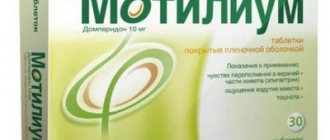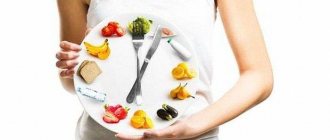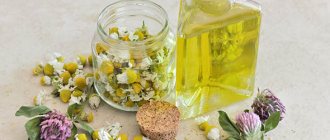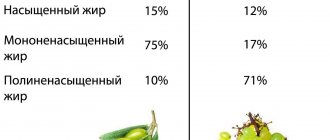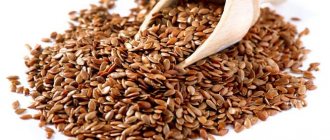Gastritis is the development of an inflammatory process that is observed in the gastric mucosa. This disease manifests itself in different ways, and therefore it is very difficult to independently determine the presence of this disease. Only a specialized doctor has the ability to determine the stage of development of the disease and determine the necessary treatment.
In order for the inflammatory process to pass quickly, it is necessary to follow a strict diet. Is it possible to eat milk, and is it possible to drink it if bacterial infection or irritation of the mucous membrane occurs?
To clearly determine the answer to this question, it is necessary to examine the chemical composition of this product. It contains a large number of microelements that are important for the human body.
At the same time, they have a beneficial effect on the functioning of the gastrointestinal tract. Milk helps the intestinal muscles contract better, protects the body from the effects of various harmful microorganisms, as well as bacteria. However, when there is an inflammatory process, which is expressed in the form of gastritis, is it possible to drink milk?
Hello gastritis!
Instead of mayonnaise, it is better to use vegetable oil!
Of course, it would be ideal to refuse to drink liquids at this time - this is called dry fasting, but you should not torture yourself, and if you feel thirsty, drink only distilled warm water.
At first, it is better to stop all physical activity and rest in bed, while giving your digestive system a rest. On the next day of the diet, warm drinks are allowed - tea, rosehip infusions, weak meat broth, slimy soup.
After 2-3 days of fasting, milk, jelly, compote, and cream are allowed. You can also eat rice and semolina porridge. Then, the diet can be diluted with crackers, stale white bread and boiled meat. A disease such as acute gastritis goes away in about a week.
Chronic gastritis is longer lasting, but less pronounced; the gastric mucosa is inflamed, and because of this, the activity of the stomach is disrupted. Gastritis is divided into two types:
- With increased acidity - with an increase in the amount of gastric juice (the main symptom is heartburn).
- With low acidity - when the gastric mucosa becomes thinner, its glands die.
When choosing a diet and planning your meals, you should definitely take into account what kind of diagnosis your doctor gave you. You also need to remember that no medicine will help you as much as diet, because this is the most important part of treatment, and it is worth sticking to it.
One of the main provisions of the diet is that all food and drinks should be warm, but not cold or hot, because this can irritate the gastric mucosa. You should eat small meals as many times a day as possible.
Features of the disease
Gastritis can be called a multifactorial pathology - the disease usually occurs not for one reason, but for a number of factors acting on the patient’s body. The appearance of gastritis is influenced not only by poor nutrition, but also by untimely food intake, stress, and structural features of the digestive tract. Recently, more and more doctors are inclined to blame the bacterium Helicobacter pylori for the occurrence of gastritis.
REFERENCE! Gastritis is an inflammatory pathology in which the pathological process affects the mucous membrane of the gastric tract. When sick, it is very important to eat right, since any product taken by the patient can worsen the situation.
There are several classifications of the disease. In terms of diet, it is convenient to consider the disease based on the level of acidity of gastric secretions. With gastritis, both high and low acidity are diagnosed; diet planning takes this factor into account. It can be noted that cocoa is not a prohibited product for any form of pathology.
Nutrition for gastritis with high acidity
Fruits and vegetables should be available both in winter and in summer
With gastritis, one of the main functions of the stomach is disrupted - secretory, so sometimes its acidity increases, that is, the content of hydrochloric acid increases. And the entire diet is aimed at reducing its secretion in order to preserve the gastric mucosa.
In order to achieve this, you should eat foods such as vegetable or mashed potatoes with butter, boiled lean fish and meat, large soups, soft-boiled eggs, cream, because they inhibit the secretion of the stomach, and hydrochloric acid in particular. Conversely, foods that cause increased secretion of hydrochloric acid should be excluded from your diet.
Compound
Milk contains essential vitamins A, B and E, as well as calcium, an easily digestible protein that has a whole list of properties:
- Restores the mucous membrane, heals various wounds;
- Improves the functioning of the entire digestive system;
- Prevents negative effects from microbes.
Considering the fact that the mucous membrane is damaged, you need to take this product very carefully. In this case, there are certain rules that must be followed.
It is worth seeing a doctor and getting his opinion.
Nutrition for gastritis with low acidity
With this type of gastritis, everything is completely opposite. The secretion of acid in the stomach is impaired and you need to stimulate its secretion. With this disease, broths made from meat or fish, meat, but always lean, decoctions of vegetables, and stale white bread can help you. Various juices can have a beneficial effect on the course of the disease, but coffee and tea should be avoided.
Grapes, carrots, beets, beans and peas are also usually excluded from the diet because they are high in dietary fiber. With such gastritis, lard, baked goods, and anything fried are contraindicated. At the same time, periods of exacerbation may periodically occur, then we exclude fruits and vegetables from the diet. Drinking juice from currants and white cabbage becomes useful during the disease. You can also add fresh cranberries to your table.
pros
What else makes cocoa stand out? The benefits and harms of this drink have long been known to doctors. Let's start with the positive aspects. In addition to its pleasant taste, cocoa has a number of benefits.
Among the advantages of the mentioned product are:
- Presence of folic acid. It has a beneficial effect on the body as a whole. Folic acid is extremely important for pregnant women.
- Melanin helps restore sleep and wakefulness phases. This substance also has a good effect on the body's protective functions.
- Cocoa contains procyanidin. It is needed for healthy hair and skin.
- Cocoa butter is often used to heal wounds and scratches. Cocoa beans contain cocohil. It is this that gives the drink its restorative functions.
I guess that's all. But is it possible to consume cocoa if you have gastritis? And what harm can this drink cause?
Weekly diet for gastritis with high acidity
Fried and fatty foods are contraindicated!
As already mentioned, with this type of gastritis you need to reduce the secretion of acid in the stomach, and this can be done by eating food that is easily and quickly digested and evacuated from the body.
Such food does not require a large amount of gastric juice for its digestion, which is what we want to achieve. When creating a diet, remember its main principle - eat small portions at least 4 times a day. You also need to know that you need to salt your food less than usual.
First day
For breakfast you can eat buckwheat porridge, always milk and pureed, add a curd soufflé to it and wash it down with warm tea with lemon. For the second breakfast, a good choice would be one soft-boiled egg. For lunch, you can make oatmeal soup with dried fruit compote. For dinner, a good choice would be to cook steamed fish balls with noodles. Then, before going to bed, you can drink a glass of milk.
Second day
When you wake up, you can eat any bun, but be sure to eat a stale bun and a soft-boiled egg. Later, cottage cheese pancakes are served for second breakfast. For lunch you can make puree soup with zucchini. Lazy dumplings with tea for dinner, and another glass of milk before bed.
The third day
For breakfast, Hercules porridge with milk and tea, also with milk, is good; a little later you can eat an apple-carrot soufflé. For lunch you should prepare rice soup with milk, as well as chicken zrazy, omelet and fruit jelly. In the evening you can eat spinach, meat or mashed potatoes, and curd cream a little later.
Fourth day
A good choice in the morning would be rice porridge with milk, and for second breakfast you can eat a stale bun with tea and mild cheese. For lunch we cook vegetable soup, you can also make rice with veal and vegetables. For dinner, you can boil fish and potatoes, and drink a glass of milk before going to bed.
About the harm
Doctors note that the harmful properties of cocoa mainly depend on the individual characteristics of the body. Therefore, an ideally healthy person has nothing to fear. But if you have any diseases, you will have to treat this drink with caution.
Among its negative features are:
- The presence of purines in the drink. This substance is involved in DNA synthesis and protein breakdown. But some people may experience gout and other joint diseases due to purines.
- Dyes and flavors. Unfortunately, it is difficult to find 100% natural cocoa powder in the store. Manufacturers often use dyes, flavors and other chemicals in their products, which are not good for the body.
- In some countries, cocoa trees and beans are treated with pesticides. These substances end up in cocoa powder.
- Essential oils and organic acids contained in the product may cause allergies.
- Drinking too much cocoa can lead to nervousness, increased excitability and even irritability.
Now it is clear what cocoa is. We also know the benefits and harms of this product. But is it worth using it for gastritis?
Weekly diet for gastritis with low acidity
Natural and fresh foods are the key to good digestion
With this type of gastritis, you should eat bland, light food with a bright taste. It should be remembered that milk has a bad effect on the stomach in people with reduced gastric secretion. As in the case of increased acidity, you should not eat a lot of fatty foods; another feature of the diet is the absence of a second breakfast.
First day
In the morning we prepare buckwheat porridge and drink a cup of coffee with milk. For lunch, we prepare vegetable soup with meat broth or a potato casserole with meat; you can drink jelly. We have dinner with baked fish and potatoes, drink tea, and before bed we drink kefir with cookies.
Second day
Breakfast consists of semolina pancakes and tea, lunch - borscht in meat broth and boiled beef with vegetable stew. For dinner we prepare cabbage casserole with meat, before going to bed you can have a glass of kefir with a bun.
The third day
For breakfast we prepare millet porridge with milk, coffee with milk and fish bits. We have lunch with broth with meatballs and vegetable puree with a cutlet, and you can drink jelly. Dinner consists of buckwheat with tea, and before bed again kefir with cookies.
Fourth day
Breakfast consists of oatmeal and omelette with tea. We have lunch with fish pickle and boiled chicken with noodles. For dinner you can eat pancakes with meat and drink tea. Before bed - a glass of kefir.
Fifth day
For breakfast we eat potato chips and drink coffee with milk. We have lunch with liver puree soup and cutlets with carrot puree. For dinner, we prepare pumpkin porridge and cottage cheese casserole, and drink a cup of tea. Before going to bed, drink a glass of kefir with a bun again.
How to choose halva
Since today halva is presented in a wide range, you need to know how to choose it correctly. Sunflower product is especially popular. The delicacy, if it is of high quality, should be somewhat dry. There should be no oily coating, fat or sugar droplets on it.
The color of the halva should be grayish-green. And the taste should not be bitter. You should also choose halva, which is not too sweet and cloying. The main signs of a quality product remain moderately sweet taste, light color and dry surface.
The emergence of puffed corn
The word “popcorn” comes from the English words “popped” - popping and “corn” - corn. The birthplace of corn, and therefore popcorn, is America. In Mexico, this crop was first eaten 10 thousand years ago. Corn was used to make flour and medicine. Clothes and ropes were woven from the leaves of the plant.
It is believed that even the ancient Aztecs knew about the property of maize grains to burst when heated. According to legend, the first European to try puffed corn was Christopher Columbus.
To make popcorn you need a special type of corn. The grains of maize, which is used for puffed corn, differ in the thickness of the shell. As the temperature rises, the liquid inside the grain turns into steam, which presses on the shell from the inside. Due to this, the shell ruptures with a characteristic pop: “Pop!”
Not only corn grains, but also wheat, rice, and amaranth can burst when heated. However, these cultures did not gain distribution and popularity.
Puffed corn began to be sold for the first time in 1885, thanks to the efforts of Charles Critors. The confectioner came up with a special machine for frying grains in pork fat or oil. At the World Exhibition, where the device was demonstrated, people appreciated not only the taste of popcorn, but also the bright way of preparing the delicacy.
In the 21st century, popcorn is the second most popular corn dish in the world after corn flakes.

